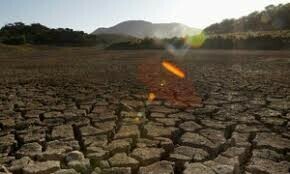
[ad_1]

PARIS: The United Nations on Thursday said nations have just months to supercharge their climate plans and called for massive global action to avoid devastating warming.
The UN Environment Programme’s annual Emissions Gap report was released ahead of COP29 climate talks in Azerbaijan and a looming deadline for countries to update and improve their carbon-cutting commitments.
New targets matter because the current crop of climate plans put the world on track for catastrophic warming, the UN said, risking devastating consequences for humanity and irreversible tipping points on land and in the oceans. Emissions are still rising when they need to be falling. And fast. Here are some key takeaways:
State of play
Planet-heating pollution — largely from burning oil, gas and coal but also from things like farming and forest loss — rose 1.3 per cent in 2023 from the previous year. That took emissions to a new record high of 57.1 billion tonnes of CO2 or its equivalent in other greenhouse gases. Each year of rises further imperils the possibility of capping global warming at 1.5 degrees Celsius above pre-industrial levels — long identified as a limit for a relatively climate-safe world, albeit one still roiled by severe impacts.
To keep 1.5C in play, emissions need to be slashed more than 40pc by 2030, from 2019 levels. That means a nine percent annual reduction in global emissions to 2030, UN chief Antonio Guterres said.
To put that in context, the fall in 2020 emissions due to extraordinary lockdowns and travel restrictions was roughly five percent compared to the previous year.
Heavy hitters
The lion’s share of the world’s greenhouse gas pollution comes from the major economies of the G20 — not including the African Union — which accounted for 77pc of the total in 2023, according to the UNEP report.
And three countries churned out roughly half of all global carbon emissions last year: China at 30pc, the US 11pc and India eight percent.
The 27-nation European Union produced six percent, according to the UN figures, which exclude greenhouse gases from land use and forestry. Among the world’s biggest polluters, only the US and EU saw reductions last year from 2022 (down 1.4pc and 7.5pc respectively).
Others were heading in the opposite direction, with China’s emissions up 5.2pc and India’s growing 6.1pc.
Promises, promises
Almost 200 countries have issued formal climate commitments under the Paris Agreement. Known as Nationally Determined Contributions (NDC), these are expected to be updated and strengthened every five years, with a fresh round of pledges due early next year ahead of UN climate talks in Brazil. UNEP called for these to reflect a “quantum leap” in ambition.
That is because even if all the existing NDCs were implemented in full, the world would still be on track for devastating 2.6C of global warming by 2100. And real-world action is lagging even further behind. Current policies imply 3.1C.
Fair share?
The US still has the biggest carbon footprint when looking at all historical emissions from 1850 to 2022, with 20pc of the total, according to the UNEP data.
China and the EU are tied at 12pc, while India accounts for three percent of carbon pollution over the 172-year period.
Published in Dawn, October 25th, 2024
[ad_2]
Source link






